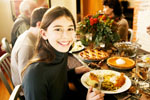 We have a great dinner game called 'Rose and Thorn' to encourage families to discuss their day and share their feelings. Bonus: The game develops communication skills.
Steps:
1. Explain the game 'Rose and Thorn' you are going to play with your family. The Rose in the title is something great that happened in your day, and the Thorn is something upsetting that happened in your day.
2. The first person to speak shares the Rose and the Thorn of their day with everyone.
3. Continue on until each person has had an opportunity to share their Rose and Thorn.
We hope that this game plants a bed of roses in your home, and helps you avert any pain from the thorns.
 Jo-Anne's youngest child takes the credit for coming up with this fun word game, that can be enjoyed at a family meal, in the car, as a class activity and more. It develops spelling skills and encourages vocabulary building at the same time.
Steps:
1. The person who goes first, announces the word ending and spelling that everyone must try to match with a word suggestion on their turn, for example -ight (night, right, sight, fight, light, flight).
2. The game proceeds in a clockwise direction with each person stating a word that ends in the suggested ending, in this case -ight.
3. When a participant can no longer think of a word at their turn, she or he is out.
4. The last person to suggest a word is the winner.
5. The spelling is more important than the sound, so weight could also be used for an -ight ending.
Really everyone wins at this game because it can be so much fun.
* Family tested and approved.
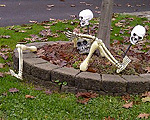 Families in communities help build the holiday excitement for Halloween by decorating their homes.
This next activity is designed to help get your child to use their imagination to create their own Halloween decoration. It may also open their mind to the fact that there are many different jobs available in the world.
You will need:
Pencil or other writing/colouring utensils
Paper
Steps:
1. Brainstorm symbols associated with Halloween together with your child, and make a list, i.e. pumpkins, goblins, witches, bats and spider webs.
2. Ask your child to be a Halloween designer for the next hour, and draw their own one-of-a-kind decoration creation. He may wish to review the Halloween symbol list you made together.
3. Discuss the kinds of materials which could be used to make your child's design, if it were actually to be created.
4. Hang up your child's Halloween decoration design to get your own home into the holiday spirit.
Challenge:
Help your child actually make their Halloween decoration from their design (using the materials discussed or available alternatives) and display it.
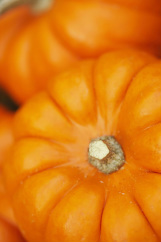 Pumpkins are a very important part of Halloween and the fall. If you carve a jack-o-lantern this year, have your child scoop out the pumpkin seeds inside for you to make the Sweet and Spicy Pumpkin Seed Recipe below.
Roasted pumpkin seeds can be a healthy snack to give the trick-or-treaters, before they head out in search of candy. This particular recipe uses egg whites instead of the usual butter or oil required in most roasted pumpkin recipes.
You will need:
·1 egg white
·¼ cup white sugar
·½ teaspoon fine grained sea salt
·1 cup fresh pumpkin seeds (washed and dried)
Steps:
1. Preheat your oven to 375°F and line a baking sheet with aluminum foil.
2. Spray the baking sheet with non-stick cooking spray (Parchment paper is an alternative).
3. In a medium-sized bowl, whisk together the egg white, sugar and salt.
4. Add the pumpkin seeds and toss well. Drain off any excess egg white (using a colander) and place seeds in a single layer across prepared baking sheet.
5. Bake for 10-12 minutes or until seeds are golden in colour.
6. Remove from oven and allow to cool. Seeds may be kept up to 3 days in an airtight container.
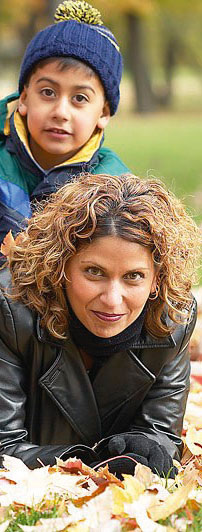 We have a creative activity to enjoy with your child, that will give her the chance to enjoy improvisation and the season.
Goal: Your child will pretend she is a leaf just before the Fall season being interviewed by you. She will answer your questions 'in character'. You will be asking the questions, using the sample ones below, or questions of your own. This exercise will give your child the chance to develop their ability to think on their feet while having fun.
Sample questions for 'your leaf':
1. What is your name?
2. What kind of leaf are you?
3. Have you always lived on this tree?
4. Do you have any friends or family on this tree?
5. Do you know what colour you will be turning this Autumn?
6. Are you excited to be changing colours?
7. What are your plans after you fall off the tree?
Challenge:
Reverse roles and have your child be the interviewer and you be the leaf. Encourage him to make up his own questions.
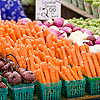 Farmers' markets can offer fabulous outings to enjoy the outdoors and learn together with your child. No matter the age, there are ways to make the trip come alive. We have provided a number of activity example below. We invite you to add to the list in our comments section using the form below.
Farmers' market activities:
1. There are lots of different coloured vegetables at farmers' markets. Ask your child to find vegetables of a certain colour; i.e. green, orange, yellow.
2. Identify different vegetables with your child, to expand their vocabulary.
3. Ask your child to prepare a list of questions to ask the farmers at the different stalls prior to attending the farmers' market. The questions should be directed at learning more about the job of a farmer, and the different steps that go into getting the vegetables from the ground to the market. Then have your child choose one or more farmers to interview using their questions.
4. When you return home, ask your child to draw a picture of the farmers' market, including all of the people, places and things which he remembers seeing.
Note: If you have a chance to visit your local library, Deborah Madison has written a number of wonderful vegetarian cookbooks which make great use of farmers' market produce.
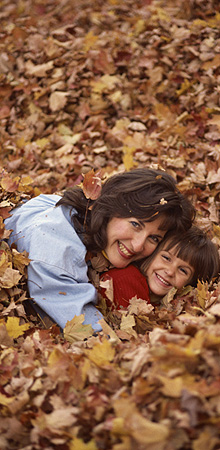 Poetry often includes beautiful imagery within its verses. In fact, seasonal descriptions often include particularly good imagery using words children can appreciate.
In this next activity, we have written a Fall poem to enjoy with your child. You can read it together, and 'analyze' it by identifying the different images described. You may even want to copy it out, and underline the images created together.
You can also ask your child to explain the way he sees each image in his mind, to develop his verbal skills.
Poem:
I like to see leaves in the Fall,
Up in the trees, so big and tall,
Red and yellow, orange too,
Imagine if the leaves turned blue.
They blow around me when I walk,
And on the paths they almost talk,
As they crunch below my feet,
C-runch, the noise is such a treat.
But the best part of it all,
Is after all those leaves do fall,
And my parents pile them high,
For me to have the chance to fly ...
And jump into that great, big pile of leaves.
Challenges:
1. Browse the internet or books in the library with your child to find other Autumn poems. Discuss the imagery created in each one.
2. Have your child illustrate the images from the poem above, or one of the poems discovered in their research.
3. Encourage your child to write her own poem about Fall, making sure she is mindful of the images she wishes to include.
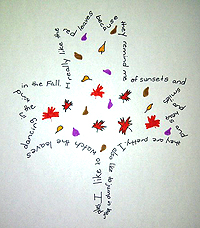 Artwork creates something visual that children can be proud of at any age. We're 'fall'ing for the leaf art activity pictured at left, that celebrates the Autumn season. It integrates creative writing, the level of complexity involved can be tailored to different age groups and it looks great on the refrigerator or on a classroom bulletin board.
You will need:
Blank piece of paper
Pencil
Fine black marker
Markers, pencil crayons or crayons
Steps:
1. Brainstorm with your child what she likes about the Fall season and have her write out a list, or record it yourself.
2. Ask your child to use the list to write out two to three sentences about what she likes the Fall. You can write out the sentences discussed for a younger child.
3. Have your child draw a leaf in pencil on a piece of blank paper, or draw one for her to use.
4. Have your child write out the two to three sentences about why she likes Fall along the outside of the leaf with a fine liner black marker. You can write out the sentences for a younger child.
5. Have your child (or you) erase the pencil line created when the leaf was originally drawn.
6. Ask your child to illustrate their sentences in the interior of the leaf, or simply decorate it.
Challenges:
1. You may wish to ask an older child to research the shape of different types of leaves before commencing the activity, and decide which one specifically he wishes to copy for his story shape.
2. An older child may choose to create a story about Fall instead of the two to three sentences. He would also copy it out in the shape of the leaf, working from the exterior to the interior. The story could then be illustrated in the space remaining inside the leaf, or in the blank space surrounding the leaf.
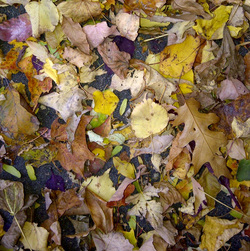 Kids generally think of leaf piles as extrodinarily exciting 'mountains' to jump in. And it's true! However, we have another activity to experience leaf piles creatively before the leaves go flying in all directions.
Fun with Colour
Observe a leaf pile near your home (or the photograph in this post) together with your child and ask him to identify as many colours as he can. This exercise is great for building observation and classification skills.
Challenge an older child by asking her to pick up individual leaves and decide on more descriptive colour names; for example eggplant purple, fire engine red, jade green. Then discuss how she chose to name the colours. This will help build her innovative thinking and verbal skills.
Check back soon for more ideas to 'fall' for the season.
|









 RSS Feed
RSS Feed